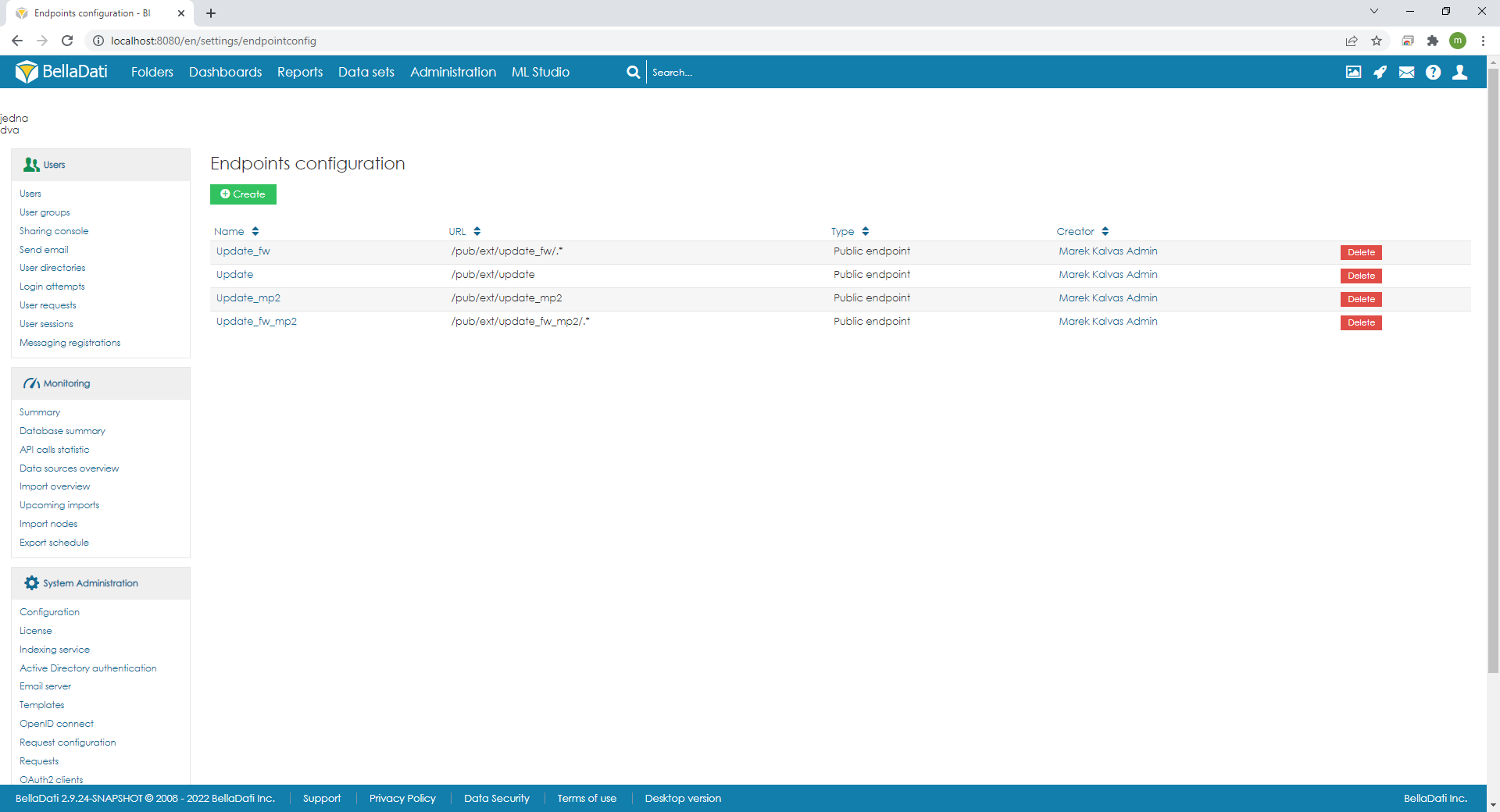Page History
| Sv translation | |||||||
|---|---|---|---|---|---|---|---|
| |||||||
Users with the domain administrator role can create new custom endpoints since version 2.9.23.1. There are 2 types of Authorization
Depending on authorization type, URL is generated. For Public, prefix "/pub/ext/" is used. For OAuth, prefix "/api/ext/" is used. For example if URL is set to "update" and Autorization is set to "public" generated adress will be "/pub/ext/update" Set EndpointTo set the new endpoint, you should go to the "Endpoints configuration" in the By clicking on the template name, an editor will be open. Here is an example of endpoint, that will return last value from attribute L_VERSION from dataset 1118.
|
| Sv translation | ||||||||||||
|---|---|---|---|---|---|---|---|---|---|---|---|---|
| ||||||||||||
ドメイン管理者ロールを持つユーザーは、 バージョン2.9. 18以降のメールテンプレートを設定し、バージョン2.9.19以降のメールテンプレートに翻訳を追加できます。テンプレートを持つことができるeメールには、4つのタイプがあります:
テンプレートの設定テンプレートを設定するには、[管理]トップメニューの[メールテンプレート]に移動する必要があります。 テンプレート名をクリックすると、エディタが開きます。新規ユーザー向けのメールテンプレートの例を次に示します。
メールテンプレートの翻訳メールテンプレートの翻訳を追加できます。これを行うには、優先言語を選択して、選択した言語のすべてのテンプレートが表示されるようにします。 次にAdministering Administering Users23.1以降、新しいカスタムエンドポイントを作成することができます。 オーソライズには2種類あります
認可の種類によって、URLが生成されます。Publicの場合、プレフィックスとして"/pub/ext/"が使用されます。OAuthの場合は、"/api/ext/"という接頭辞がつきます。 例えば、URLが "update "でAutorizationが "public "の場合、生成されるアドレスは"/pub/ext/update "になります。 エンドポイントの設定新しいエンドポイントを設定するには、管理画面のトップメニューにある「エンドポイントの設定」を開きます。 テンプレート名をクリックすると、エディターが開きます。 以下は、データセット1118から属性L_VERSIONの最後の値を返すエンドポイントの例です。
|
